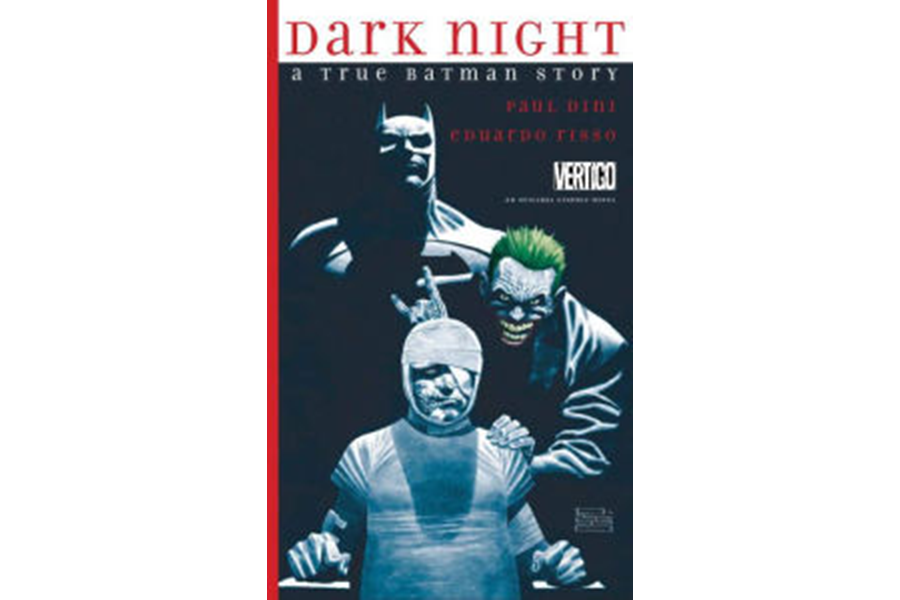'Dark Night' turns Batman into a real-life hero
Loading...
In his new graphic novel, comic book and TV writer/producer Paul Dini tells the true story of a dark journey he was forced to make – and how he was helped in his hour of need by a certain Caped Crusader
In January 1993, Dini was in a great place. An Emmy award-winning writer for the Tiny Toon Adventures cartoon show and writing the acclaimed "Batman: The Animated Series", he was at the top of his game. Then, one night while walking home, his life took a terrible turn when he was mugged and brutally beaten.
In Dark Night: A True Batman Story, Dini shares with readers the story of his long difficult road to healing himself both physically and emotionally. At first his priority is healing his physical wounds, mostly around his left eye, but ultimately, his struggle to free himself from the mental walls he built around himself to hide from life becomes the real story. Dini doesn't pull any punches, using this moment of crisis to confront the shortcomings that he believes literally led him down this path.
At first, understandably, Dini's anger is directed at his attacker – their taunts, their fists, and in his mind's eye he fantasizes Batman coming to his rescue, teaching the muggers a brutal lesson. For a time he fearfully hides in his apartment. But eventually, as his attackers are not apprehended, he begins to deal with his own shortcomings.
Dini bravely bares his soul to himself and to us, reliving all his past mistakes and his self-destructive tendencies. In an internal dialogue he "talks" with various characters from the Batman show he was working on at the time. Villains like the Joker "speak" to Dini, urging him to put himself down and arguing that he should continue making destructive choices. But of course it's Batman who comes to the rescue – chiding him for all his bad decisions, urging him to not give up, and to face and fix his faults and reclaim his life.
Since this tale is told in graphic novel format, it needs an artist, and to illustrate Dini's colorful internal dialogues requires an amazing artist. Argentinian artist Eduardo Risso does some masterful work here. Deftly moving from art style to art style he illustrates Dini's childhood memories, his work life at the Warner Bros. studios, and his inner battles depicted with the cast from "Batman: The Animated Series." Risso does an incredible job.
"Dark Night" shares a terrible moment in Dini's life. I applaud Dini for his bravery and the inner strength to pull himself out of a pit of fear and self-loathing. I thank him for sharing this story which could not have been easy. But "Dark Night" will serve as an inspiration to any of us who've been knocked down by life to light our internal bat-signals and call on our own internal Batman to help us through the dark night.








